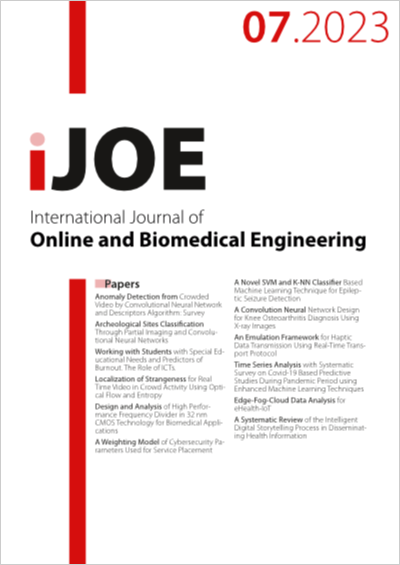An Emulation Framework for Haptic Data Transmission Using Real-Time Transport Protocol
DOI:
https://doi.org/10.3991/ijoe.v19i07.39187Keywords:
Tactile Internet, Haptic data, RTP, Docker Containers, NS-3Abstract
The Tactile Internet (TI) can be regarded as the next evolution in the world of communication. With its envisioned purpose and potential in shaping up the economy, industry and society, this paradigm aims to bring a new dimension to life by enabling humans to interact with machines remotely and in real-time with haptic and kinesthetic feedback. However, to translate this into reality, Tactile Internet will need to meet the stringent requirements of extremely low latency in conjunction with ultra-high reliability, availability, and security. This poses a challenge on the available communication systems to achieve a round-trip delay within 1 to 10 milliseconds time bound that enables the timely delivery of critical tactile and haptic sensations.
This paper aims to evaluate the Real-Time Transport Protocol (RTP) through an emulation framework. It integrates containerization using Linux-based Docker Containers with NS-3 Network Simulator to conceptualize a haptic teleoperation system. The framework is then used to test the protocol’s feasibility for delivering texture haptic data between master and slave domains in accordance with the end-to-end delay requirements specified by IEEE 1918.1 standards. The results have shown that the timely provision of haptic data is achievable by obtaining an average round-trip delay of 17.8493 ms from the emulation experiment. As such, the results satisfy the expected IEEE 1918.1 standards constraints for medium-dynamic environment use cases.
Downloads
Published
How to Cite
Issue
Section
License
Copyright (c) 2023 Israa Abdullah, Wrya Monnet

This work is licensed under a Creative Commons Attribution 4.0 International License.


